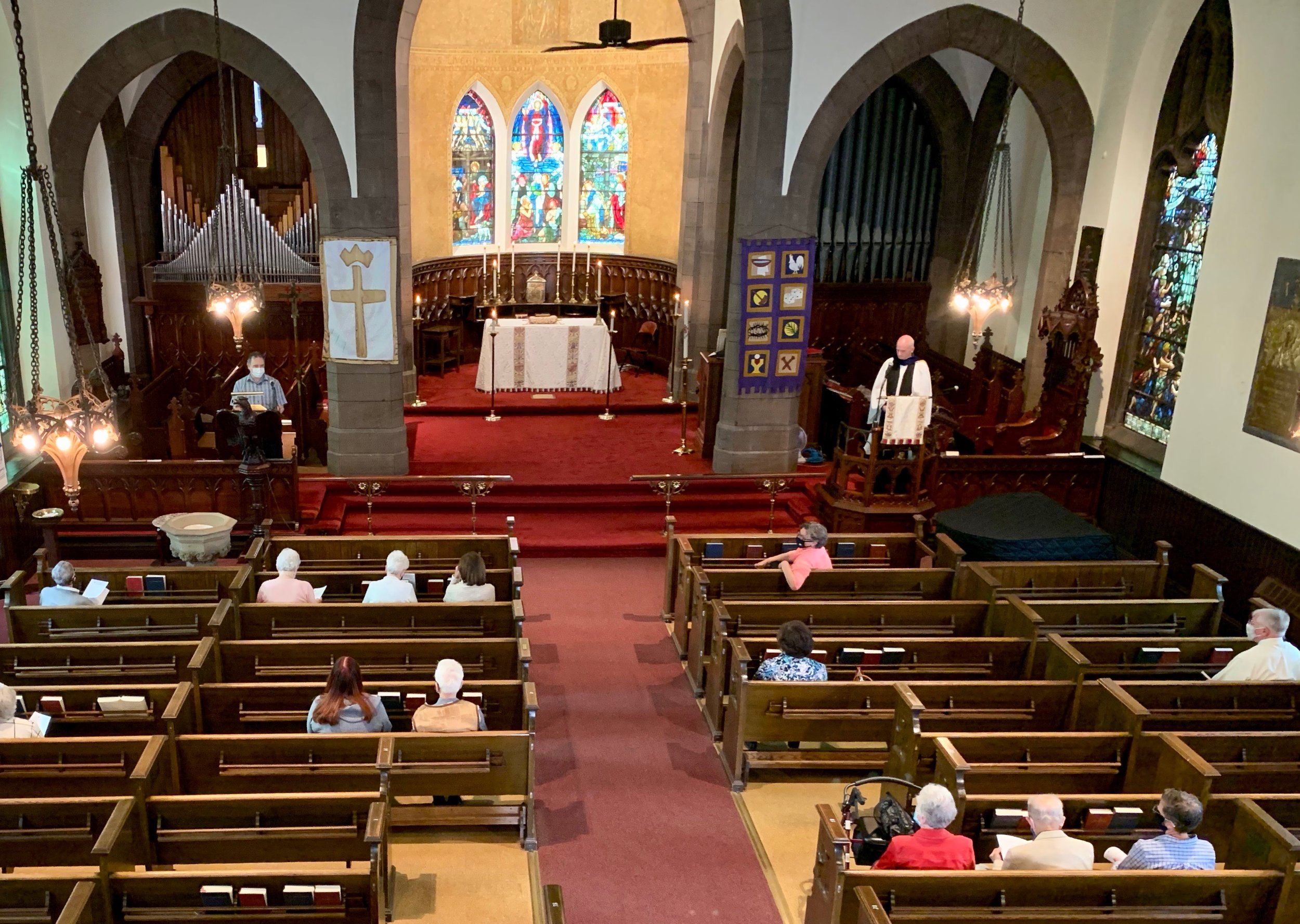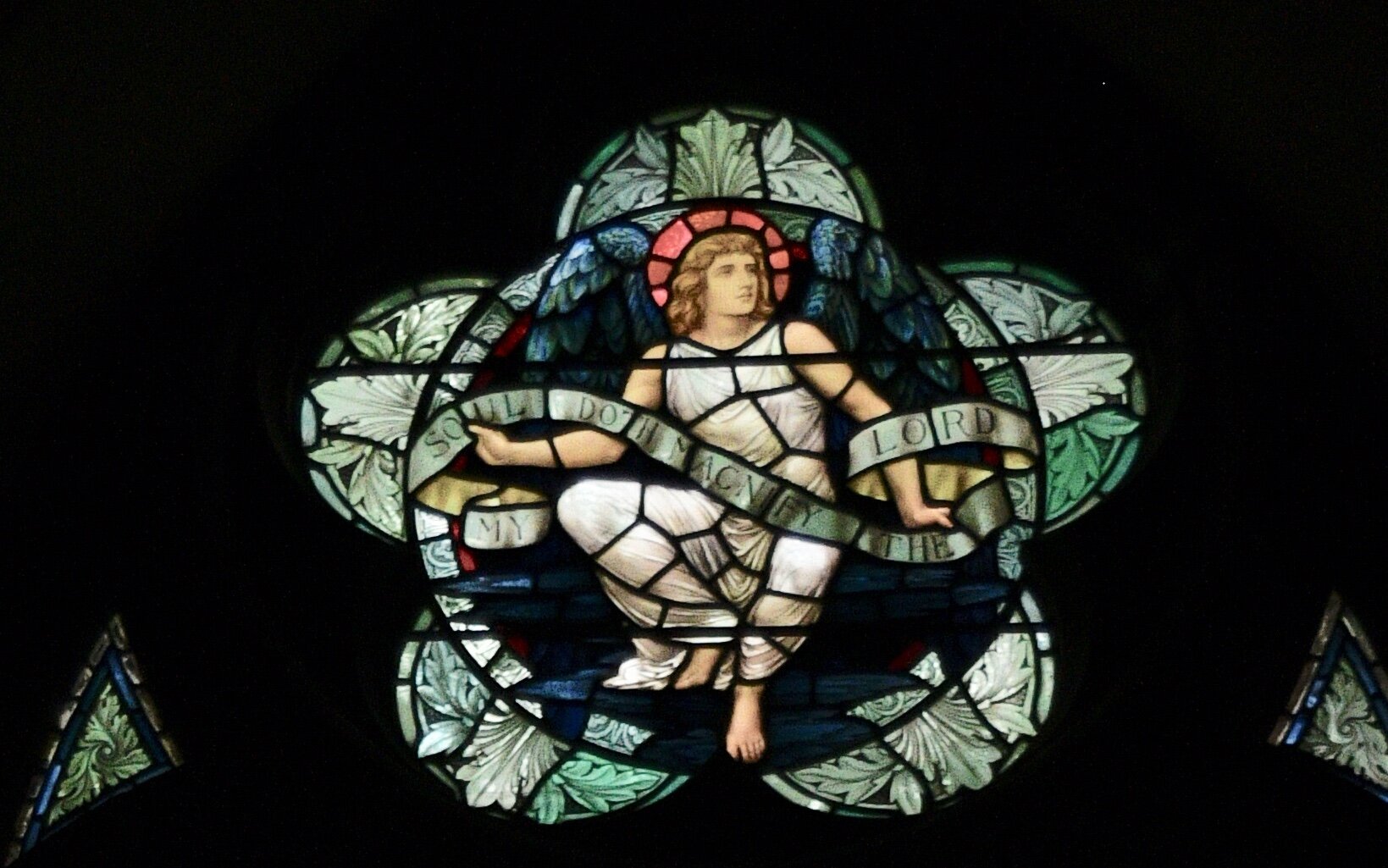
History of Zion Church
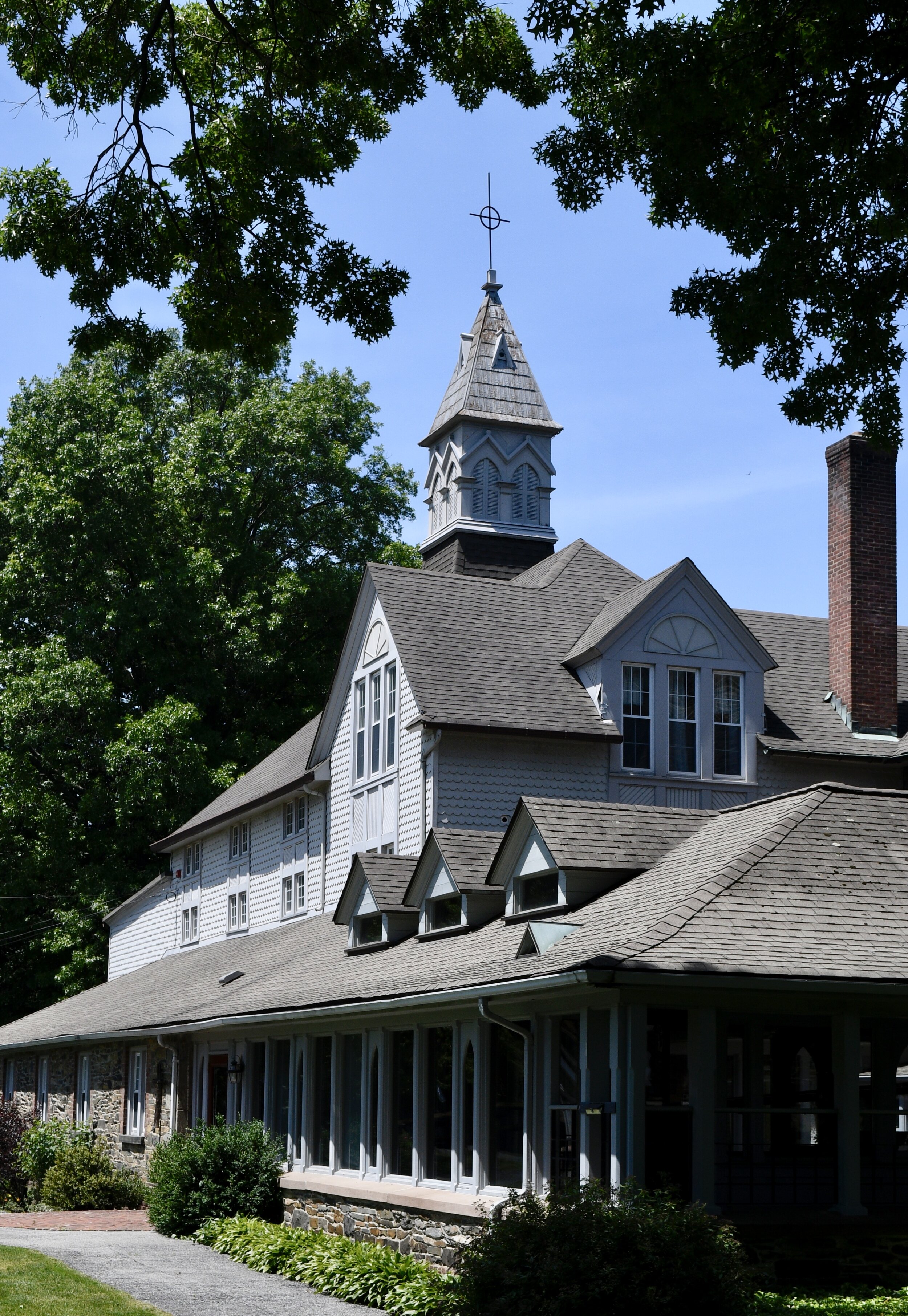


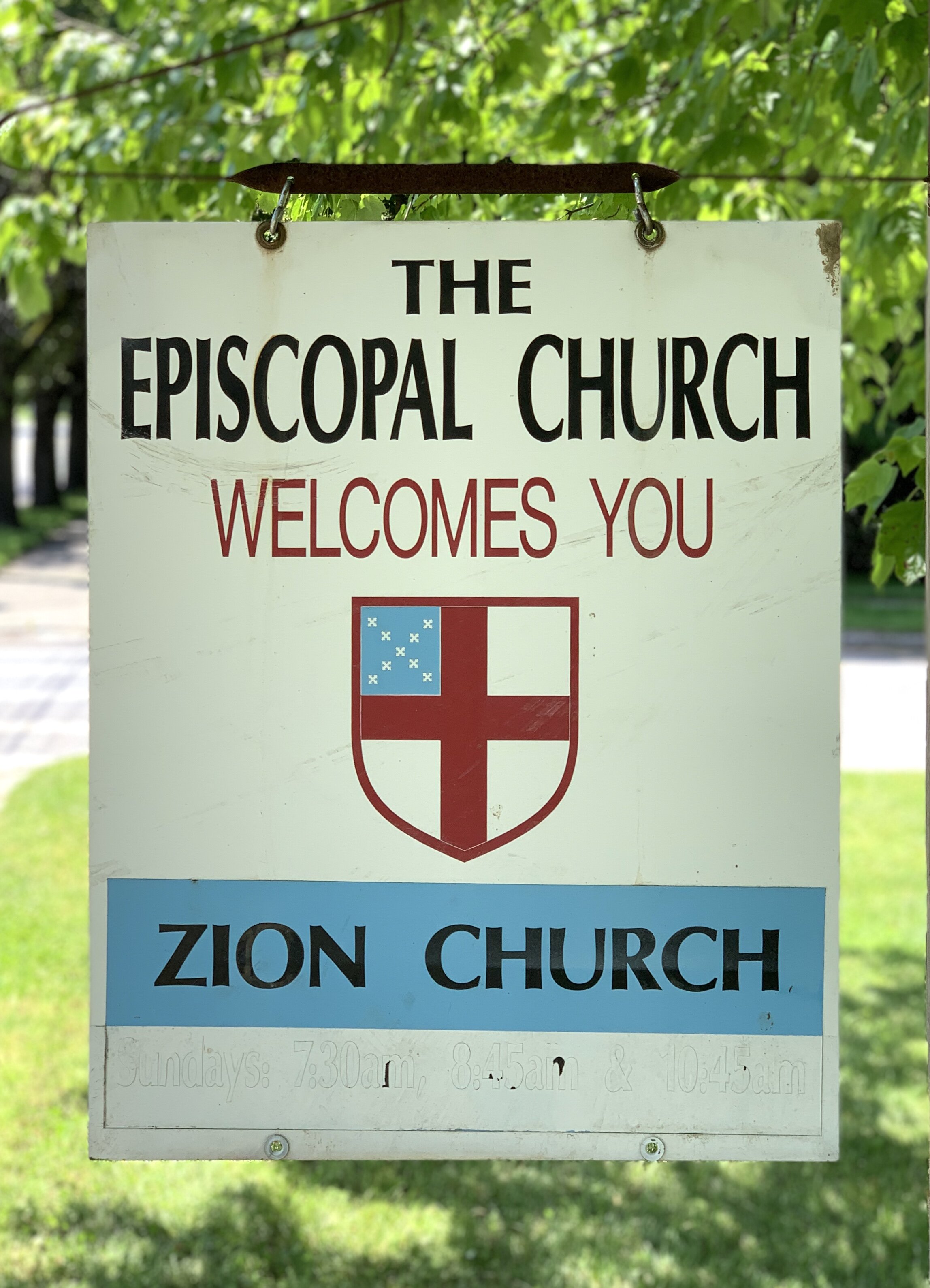


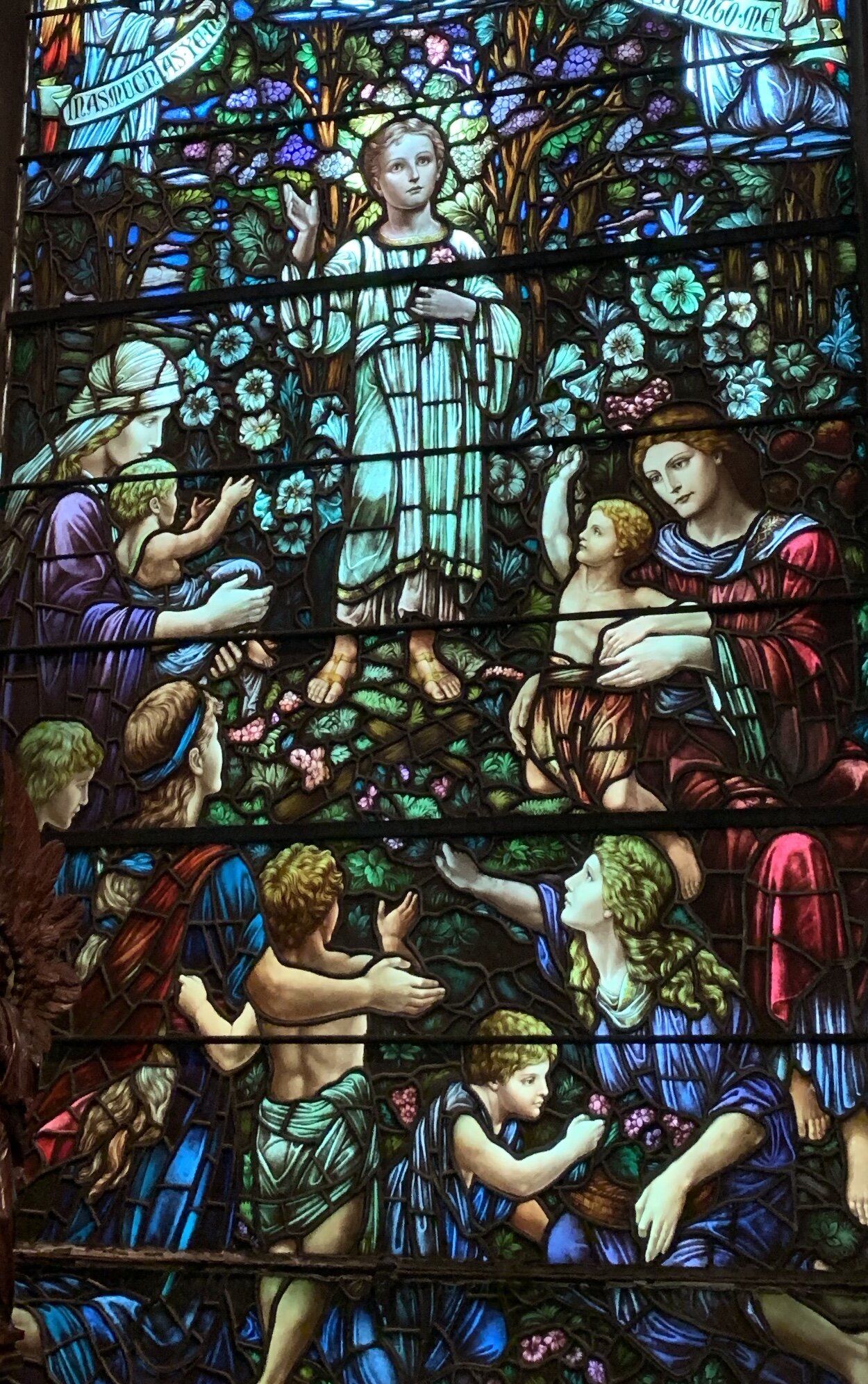



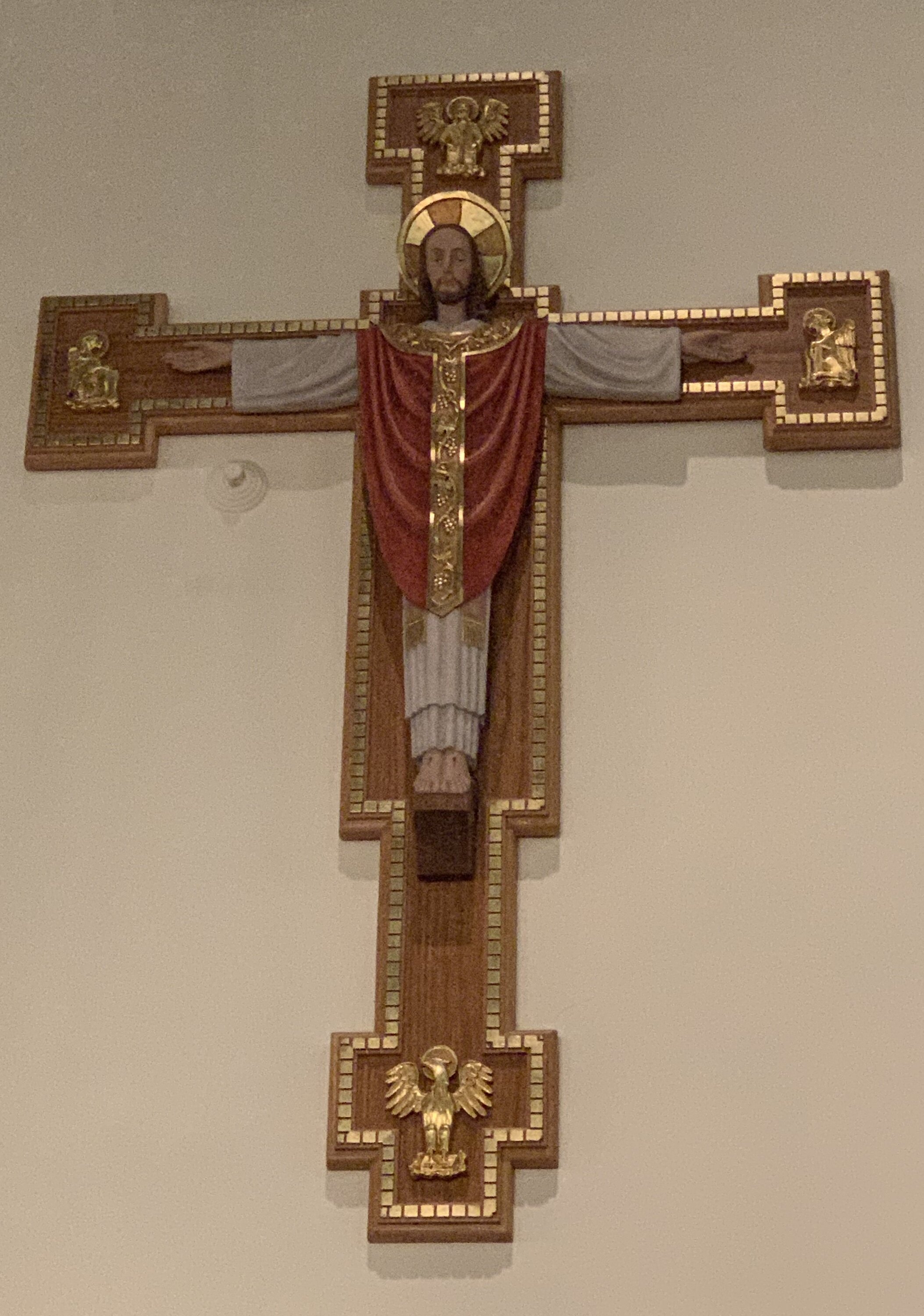

Zion Church – A History
The shade of an apple tree was the birth cradle of Zion Parish. Under this tree, on the brow of the hill overlooking the Falls in Wappingers Creek, Joanna, wife of Matthew Mesier, began a Sunday School in 1820. There were only seven or eight families living in the area at the time.
The Mesiers attended Trinity Church in Fishkill, the nearest Episcopal Church, but felt the need for a church less distant for the farmers of the area and their families.
The Sunday school class was subsequently moved into the corn barn near the Mesier Homestead (shown below) where the village flagpole now stands.
The zeal of this little group attracted the attention of the Reverend Doctor George B. Andrews, who moved to a local farm in 1833 and on July 14th of that year he conducted the first official service of the Episcopal Church somewhere on the north side of Wappingers Creek. Steps were taken to erect better shelter than the apple tree for this little flock. In December 1833, Matthew Mesier gave a small tract of land between the burial ground and the turnpike (now Main Street) and on January 11, 1834, a subscription of funds for the new church was made. Sixty-four subscribers raised $1,021.50 towards a proposed cost of $2,000.
The stone for the church came from the property of Benjamin Clapp, much of it hauled by the church warden himself.
The Mesier/Reese Gravestone in the Columbarium Garden is a monument standing just above the underground vault containing the remains of the family.
When the time came to choose a name for the church, the congregation was asked to submit names; however, the name was not chosen from those suggested by Episcopalians but rather suggested by Mrs. Benjamin Clapp…a Baptist. She commented, “It is a reminder of that grand old hymn, ‘Marching to Zion’.
During the period of construction, services were regularly held in the new schoolhouse, at the corner of Fulton and Market Streets and Mr. Andrews served as pastor. The cornerstone of the church was laid November 15th.
When the first rendition of the church was built, physical comforts were scant; the spiritual comfort of owning a house of worship no doubt compensated for bodily discomfort. Chilled toes and strained eyes seemed of no consequence to those worshippers, for there was no light other than candles, and no heat. The congregation sat in pews arranged so that there were only side aisles. The bare wooden floor was noisy and cold. Inside were high pews, a flat plaster ceiling, plain colored glass windows, and a high wine-glass pulpit towering over a tiny altar against the flat west wall, reached by a winding staircase. Such was Zion Protestant Episcopal Church when dedicated by Bishop Onderdonk on May 6, 1836.
The final cost of the building was $3,810, well in excess of the money subscribed, and funds had to be borrowed to pay the builders. Trinity Church, Wall Street, reduced the debt with a donation. St. Marks in the Bowery furnished a marble baptismal font for the infant Christians of the infant parish. George B. Reese, of Philadelphia, sent a bell for the tower; tubular chimes were added in 1896.
During these years the rector received no stipend. Expenses for the years 1836 and 1837 totaled $295.02, so the debt was slowly paid. The first diocesan report of the parish in 1836, boasted thirteen communicants, six marriages, eleven baptisms. The first confirmation class, presented in September 1837, numbered 10 persons. Music for the early church was provided by a small orchestra and in 1838 a small organ was installed.
The opening of factories in 1851 brought many people to Wappingers Falls: Zion was able to count 156 families with a large thriving church school in the basement. This burst of growth probably stimulated the first modernization of the church, when, in 1854, the chancel was added which housed an elaborate carved altar raised above the floor of the nave. The pulpit was moved to the side, and stoves were added to heat the interior.
During these years the spiritual father of the parish was the Reverend Dr. Andrews. On October 20, 1818, at the age of 32, he was made deacon, and then priest three years later. He shepherded the flock for 42 years; in addition to preaching in Amenia, Lithgow, Pleasant Valley and occasionally Marlboro, he and the parishioners of Zion helped erect churches in Amenia, Rhinebeck, Milton and Piermont. For all his travels, Mr. Andrews’ great love was for Wappingers Falls. Here he preached his last sermon on April 20, 1872, and one week later for the last time dispensed the Sacrament to his beloved people. Evidence of his continuing influence over the Village people and their love for him was their regular custom of traveling by sleigh each Christmas Eve to serenade him with carols. Mr. Andrews died on August 20, 1875, at the age of 90, in the 57th year of his ministry.
In 1865, Henry Yates Satterlee was called to the parish as curate to assist Dr. Andrews at a stipend of $500.00 which was raised to $750 upon his marriage. As the parish owned no residence, Mr. Satterlee was given the use of a cottage on the property of Irving Grinnell. Mr. Satterlee soon became the source of great energy and new life in the parish. In a few years the parish burgeoned and in 1869 there were 200 communicants and 250 church school children.
Mr. Satterlee then announced the congregation had entirely outgrown the church and a subscription was taken in early 1869 for the second “modernization” and enlargement: thirty pews were added to the nave and made possible a center aisle; three stone arches pierced the west wall; a newly-fashionable Cathedral style choir was added; and smaller separate pulpit and lectern were placed before the arches. The old ceiling was removed and the present roof installed.
The church was opened and re-dedicated on July 18, 1869 by the Rt. Rev. Horatio Potter, Bishop of New York.
This was the heyday of unfettered wealth and the Hudson Valley was the favorite country residence of many well-to-do New York City families. The church was primarily supported and governed by the “river folk” from the great estates along the Hudson’s shores. The ladies from the Hudson River estates were involved in an endless round of collecting clothing, food, and other necessities for families in difficult circumstances.
Zion ministered not only to the spiritual needs of the village, but to its more material needs as well. A sewing school, teaching young local girls this art, was a prominent part of this program. A network of choirs taught music and music appreciation. The Knights of Temperance taught boys and young men discipline and clean living through a semi-military program.
Zion’s amazingly broad, community-directed programs led to the building of the Parish Hall, one of the very earliest examples of a building erected specially to enable a parish to provide adequate recreational and educational programs. The building was the dream of Henry Satterlee. Funds were collected and plans drawn during 1881, while the new rector took a leave of absence. It was presented to him as a surprise on his return, and was completed in January the following year. In the years ahead it became a home for many activities that enriched the life of the village: Zion’s basketball teams were legend; dramatic productions on the fully equipped stage were the only kind in the area; various educational projects, notably the Weekly Free Night School, the Sewing School, and arts and crafts classes broadened the public education; an Aid and Employment Society operated in the building for years as an attempt by Zion to prevent hardships of unemployment in the village. The parish hall also housed the offices of Mr. Satterlee’s Church Home for Factory Girls, which looked after the many girls from nearby farms who came to work in the local mills. Among the active members of the congregation was Irving Grinnell. After his wife’s death, the young widower worked with his friend Mr., Satterlee and was confirmed at Zion. He entertained children on his boat, with sledding parties at his home, or stories on the church lawn. He was the prime mover in organizing six separate choirs including a funeral choir so that the rich and the poor alike might have the dignity of music at their burial.
Mr. Satterlee accepted a call to the rectorship of Calvary Church, New York in 1882, and in 1895 was elected the first Bishop of Washington where he founded the Washington Cathedral. In 1905 the Bowdoin family replaced the tubular chimes with a set of 11 bell chimes, and the tubular chimes were sent to Bishop Satterlee at the National Cathedral. Bishop Satterlee died on February 22, 1908.
J. Nevitt Steele succeeded Mr. Satterlee in 1882. As a Doctor of Music and former lawyer, his priesthood at Zion began another facet of our great tradition – that of fine music. He began his work introducing the finest of liturgical and recital music. The choirs were carefully built up until they reached a peak in a seventy-voice double chorus.
Dr. Steele led Zion to build the rectory, completed in 1887: It was large – 18 rooms, 10 fireplaces, and 54 windows on the three principal floors plus a full attic with a full basement – to accommodate Dr. Steele’s large family. Dr. Steele resigned to become vicar of Trinity Church, New York, in 1889.
The next rector was the Reverend Prescott Evarts in 1889. Under his leadership a significant goal was achieved when the chapel at New Hamburg became a serious outreach of the parish. The chapel began in 1876 as a Bible class conducted by Irving Grinnell with 36 scholars. Eventually, worship services were conducted there, serving not only the townsfolk, but the residents in the country places along the river. The building which housed this congregation was plain, unattractive, and incredibly hot during the summer, so William Henry Reese, then warden of Zion Parish, and a New Hamburg resident, began a subscription among his neighbors to erect a suitable chapel building, dedicated in 1901, the first year of the rectorship of the Rev. W. H. Pott. The little chapel is an active and vital church named St.-Nicholas-on-the-Hudson.
With the advent of her sixth rector, Gerald Cunningham, change came to Zion. He was influenced by the new “liberal” tradition which was then powerful in Protestant circles and making itself felt amongst some Episcopalians. His great dream was the union of all the churches in Wappingers Falls into one village church. His dream was never realized, but he instituted the low-church tradition of the parish.
The next rector, Maxwell W. Rice, who served from 1918-1945, enjoyed a tenure second only to that of Dr. Andrews in length, some 27 years. Max Rice saw Zion through the close of World War I, the hectic Twenties, the Great Depression and World War II. During the Depression, Mr. Rice’s charitable activities blessed many Wappingers Falls’ families. A man of private means, Mr. Rice made no distinction in faith or creed and recognized no limits to his ministry on the Lord’s behalf. He is remembered for his zeal in the tennis club upon the courts in Zion Park, now our parking lot.
As Long Island replaced the Hudson Valley as a fashionable country residence for the wealthy, and the War led to a more egalitarian society, the people of Zion could no longer rest on the patronage of the disappearing "river folk”.
After the war, in 1945, the Reverend Oliver Carberry succeeded Mr. Rice. He saw to much needed repairs to the parish buildings and the re-modeling of the rectory. Although he was here briefly, he began the great tradition of the annual fair, a symbol of community action that did not rely on the wealthy.
The Rev. Richard L. Harbour became the rector in 1948 and he and Mrs. Harbour were zealous in establishing a modernized program of religious education for the children of the parish. The expansion of I.B.M. brought new parishioners from around the country and the world.
In 1950, the Rev. J. Jack Sharkey found a parish which had recovered in many respects from the crippling nineteenth century patronage, but had not supported its share of the missionary work of the church. Fr. Sharkey met the Rev. Octave LaFontant, a priest of Darbonne, Haiti, and so Zion, along with the parish at St. Andrew’s Church in Poughkeepsie, adopted the Haitian school there as its mission.
Haitian art, this statue of St. Margaret of Antioch is located on the windowsill in the rear of the church.
In June 1959, The Rev. Alfred Harold Whistler, Jr. took residence as the eleventh rector and found a growing parish in an expanding community. Fr. Whistler’s talents met Zion’s needs: Zion’s structure was in need of renovation, so Fr. Whistler, a former engineer, motivated the Men’s Club to become a working party. The kitchen was moved (a necessary action since the clock weights in the tower gave way and fell to the undercroft, destroying the old kitchen) and the general structure was refurbished.
In 1964, the Rev. Robert MacGill became rector of Zion. His stewardship was marked by a focus on evangelism and an increased involvement in the mission in Haiti.
The Rev. Richard Donnelly became rector in 1971. His term was marked by a consolidation of past advances made by the parish.
1978 saw the installation of the Rev. Michael B. Webber, who continued to build in the traditions of the parish: mission was emphasized as was stewardship with a strong sense of family and “ownership” of the church and the Gospels. The charter for The Friends of Darbonne mission was created by Father Webber and Father Paul Clayton from St. Andrew’s E.C. in Poughkeepsie; it is an ongoing mission supporting a school and a church in Darbonne, Haiti.
In 1984, Zion marked its 150th Anniversary. In that celebration year, construction of the Columbarium, the memorial garden and the Chapel of the Resurrection was begun.
The Chapel of the Resurrection – Columbarium
The Memorial Garden and Columbarium
Zion’s next major undertaking was the construction of the Crossway, making the church totally handicapped accessible.
In June of 1996, Michael Webber retired.
His successor was the Rev. Jerry L. Miller, who preached his first sermon on January 3, 1998. He and his wife, Betty, moved from Missouri to Wappingers Falls.
The major changes during his term were a new brass tabernacle which sits behind the altar, flanked by six tall brass office lights, with the east and west walls of the nave holding the added Stations of the Cross. Father Miller added a variety of parish activities: a weekly movie night, Bible study, further food pantry assistance, and a pastoral care team.
The Rev. Horace Choate, Jr. and his wife, Yamily (also an Episcopal priest), came to us in 2005 from Mississippi. Dedicated to our mission in Haiti, he made a pilgrimage to Darbonne. Efforts to grow Zion included a third service, especially for families with children with the readers and acolytes the children of Zion. Our Food Pantry continued to grow with an extension of a free monthly dinner. Father Choate initiated a chapter of The Order of the Daughters of the King, naming it after St. Margaret of Antioch.
Financial setbacks in 2010 led to a period of having a part-time priest.
The Rev. Deborah Magdalene (Mother Mag), a former Sister of St. Helena, first came part-time in 2010 but increased attendance and financial support led to her being hired as full-time Rector within the first eighteen months. Zion parishioners and friends raised enough money to finish the replastering and painting of the inside of the sanctuary. The chimes were repaired and automated: they ring both the hours and a large number of hymns and songs. Adult classes including weekly Bible study, prayer instruction, inclusion workshops, and confirmation preparation. She participated in Vacation Bible School and introduced “Mini-Mag” there as well as at the Sunday “children’s sermons”. She agreed to support an Eagle Scout candidate project for a community garden situated near our Food Pantry. Mother Mag retired in 2020.
Father Anthony Stephens was hired as an interim priest when Mother Mag retired, and helped lead Zion during the very difficult Covid pandemic.
A search committee was formed in January, 2022 and found Zion’s next Priest in Charge after a lengthy search. The Reverend Alex Herasimtchuk, originally from the Hudson Valley, came to Zion, from Manhattan, in August, 2022 and was ordained in September. The congregation at Zion is very happy to have both Fr Alex, and his wife, Poppy here at Zion.








